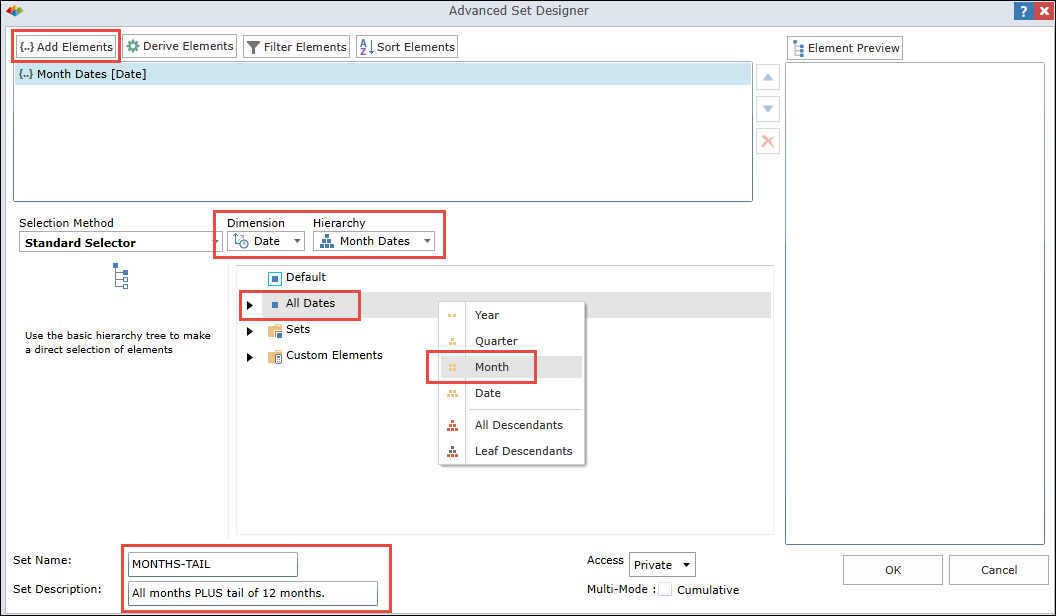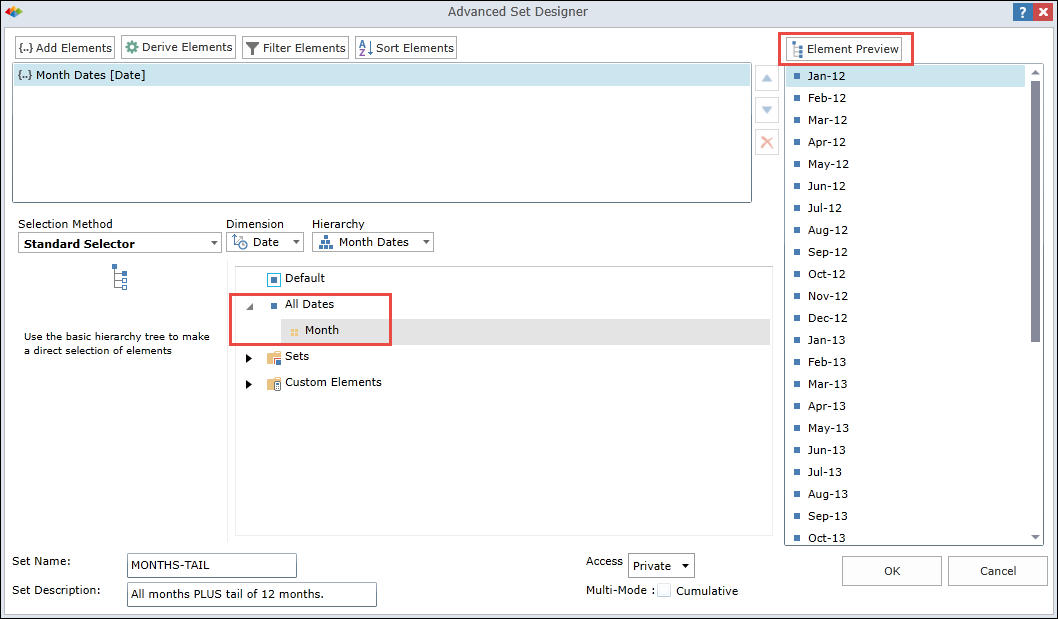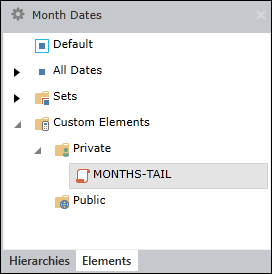ASD Example
The Advanced Set Designer (ASD) provides a high-powered interface for designing complex element sets that can be used in other ASD set combinations or queries.
Example of ASD Set for Auto-Rolling 12 Months
This example shows how the ASD dialog allows the user to define a rolling "n" month data set with just a few mouse clicks - without writing a single line of MDX code.
STEP 1
Click Set Designer in the Data Discovery/Analytics ribbon to open the ASD dialog.

STEP 2
To define an ASD set:
- Click Add Elements to add a Standard Selector to the script.
- Select the Dimension named "Date".
- Select the Hierarchy named "Month Dates".
- Right click on All Dates and select "Month".
- Type in Set Name as "MONTHS-TAIL".
- Type in Set Description as shown below.

STEP 3
To preview selected elements:
- Open the All Dates tree and select "Month".
- Click Element Preview at top right to show a list of all currently selected months. At this stage, there are a total of 36 months (12 months for each of three years: 2012, 2013, 2014).

STEP 4
To apply a filter:
- Click Filter Elements.
- Choose the Tail filter from the function list.
- In the Number of Items box, enter 12.
-
Click Element Preview to view a list of all selected months. Now there are 12 months displayed in the list, since we have applied the Tail function for viewing the past 12 months only.
NOTE: If you add later months to your data model, the list of 12 months will auto-roll accordingly. For example, if you add the first two months of 2015, the 12 months will include months 3-12 of 2014, and months 1-2 of 2015.

STEP 5
To view the ASD set in the respective report hierarchy:
- Open the Custom Elements folder.
- Open the Private Folder to view ASD sets in the Custom Elements folder for that hierarchy in which they were created. In this example, a single ASD set named "MONTHS-TAIL" is present. If you create more ASD sets for this report, they will also be shown here.

STEP 6
Right click the "MONTHS-TAIL" set to display all relevant commands, including:
- Edit Custom Set - Open the Custom Set dialog and edit the ASD set in the same manner as any custom set. Just be aware that once you make changes within the Custom Set editor, the "ASD set" is converted to a "custom set" and you can no longer load the set into the ASD editor.
- Edit in Set Designer - Open the ASD set to make further changes.
- Delete Custom Set - Delete the ASD set from the Custom Elements folder.

Home |
Table of Contents |
Index |
User Community
Pyramid Analytics © 2011-2022

